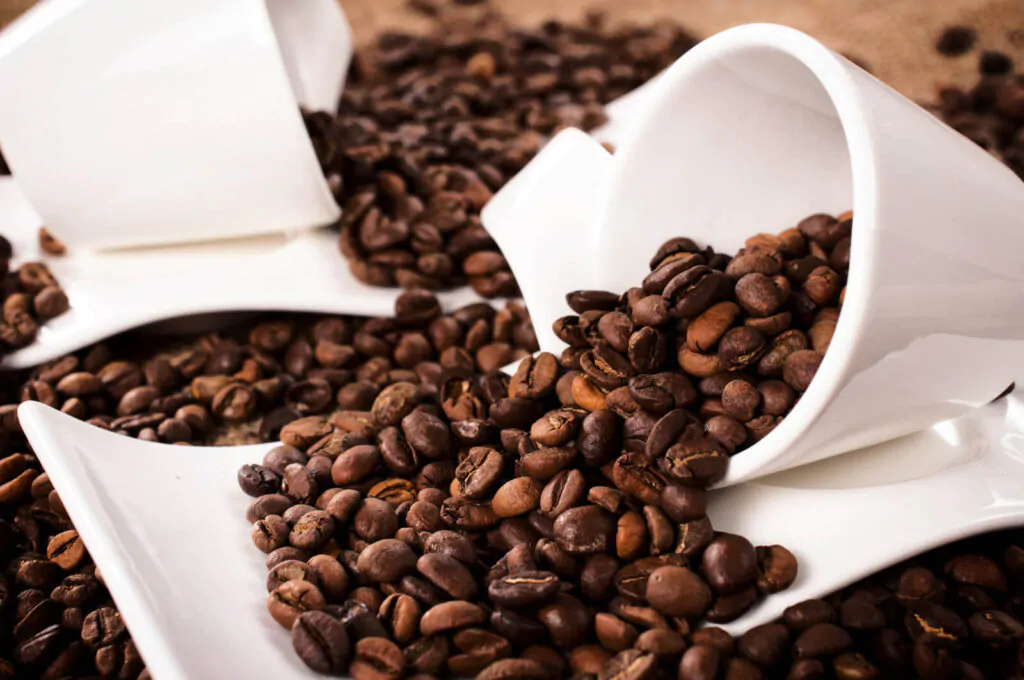Are you wondering, “what is Typica coffee?” Get to know Typica coffee and its lemon, floral, and sweet notes.

If you’re a coffee enthusiast, you’ll know that Arabica beans make superior coffees and are famed for their flavor, body, and aroma. A sub-variety of the Arabica is the Typica family, where two of the world’s best coffee beans, Kona and Blue Mountain Coffee, come from.
Typica is also one of the most culturally and genetically important high-quality Arabica coffee. Despite its vulnerability to foliar disease, better known as “coffee rust,” Typica remains popular with coffee growers because of its quality.
Types Of Coffee Beans
There are four types of coffee beans. Robusta and Arabica are the most common and economically relevant, producing about 73.72 million and over 100 million 60-kilograms bags of coffee, respectively. Liberica and Excelsa are less well-known commercial coffee bean types.

Typica doesn’t belong to the major coffee species because it’s a diversification of Arabica coffee. It also has 14 sub-arrays, including popular coffees such as:
- Criollo
- Indio
- Arábigo
- Pluma Hidalgo
- Sumatra
Typica Plants
A Typica plant is approximately five meters tall, with a slim trunk and thin conical branches that grow around 60 degrees from its parent branch. The leaves of a Typica coffee plant have a dark bronze tip, and its beans are more prominent and elongated than Bourbon. However, a Typica coffee plant only produces low amounts of coffee fruit and is highly susceptible to diseases such as nematodes.
Typica plants cultivated in elevated areas may be of higher quality.
Some farmers crossbreed Typica with other species to try to get a better yield. Below are some well-known Typica cultivars:
- Sumatra + Bourbon = Acacia
- Maragogype + Caturra = Macaturra
- Pacas + Maragogype = Pacamara
- Pache Commun + Cattura = Pache Colis
- Sumatra + Bourbon = Mundo Novo
- Mundo Novo + Caturra = Catuai
- Typica + Catimor = Rasuna
- Mundo Novo + Robusta + Bourbon = Icatu
Are you planning to grow your coffee beans? Check out: our overview of where coffee beans grow.
Typica Coffee: Then And Now
Like all Arabica coffee, Typica also originated in southwestern Ethiopia. When the Arabica coffee was taken to Yemen between the 15th and 16th century and then to India in 1700, the Typica variety reached the Malabar Coast, India, and Java, Indonesia. In 1706, a Typica plant was brought from Java to a botanical garden in Amsterdam.
Since then, the plant has been distributed to other countries, paving the way for discovering other Typica mutations and hybrids. In the late 1800s, Typica could be found throughout Central and South America, Jamaica, Cuba, and Puerto Rico. Then it became popular in Central America in the 1940s, where most coffee farms grew the plant.
However, farmers avoided investing in Typica’s risky growth because it’s prone to diseases, pests, and low yields. Thus, Typica has gradually been replaced in America.
Today, as the discovery of new coffee types continues and the development of higher quality cultivars steals producers’ interest, Typica is no longer as popular as before. Although Peru abandoned Typica in favor of more rust-resistant plants back then, it has recently gradually restarted planting more quality-oriented varieties, including Typica. There’s also continuous cultivation of Typica in the Dominican Republic and Jamaica, where it’s better known as Blue Mountain coffee.
Typica Beans In Your Coffee
If you’re eager to know what the buzz around Typica is all about, it’s time to learn how to make your cup of Joe from it.
Roasting Typica Coffee
Here are the most important factors in roasting Typica coffee:
- Density
- Bean size
- Moisture content
As a roaster, you work to evaluate beans and make decisions based on cupping. Cupping is a method to assess a coffee sample from its total quality to its characteristics, including acidity, body, and flavor.
Although Typica is a large bean, its size will change during roasting. So, roasting parameters such as time, temperature, heat, and airflow also shift. However, this doesn’t always happen because some larger beans absorb heat faster, resulting in a smoky taste.
When roasting Typica coffee, have enough airflow to support the roast so you can control heat, preserve the oils, and keep the best qualities of the beans.
Typica is prized for its outstanding clarity and acidity, resulting in a great cup of high-quality coffee. Studying and being familiar with it is vital to taste this bean’s exquisite taste. If you’re a coffee seller, adding Typica to your menu is an excellent way to attract customers who want to try something different.
Typica Coffee’s Taste

Those who have already tried the coffee described Typica’s taste as clean, complex, sweet, and with a wide range of flavor notes like lemon and floral. Note that each variety of Typica has its unique flavor because the beans are grown in different countries. That’s why it’s difficult to determine its authentic taste.
For example, Black Mountain coffee is a popular mild, soft, smooth drink with notes of nuts, chocolate, and creamy sweetness from added milk. On the other hand, Indonesian Typica has a clean, nutty, floral, fruity, vegetal, and somewhat spicy taste. The type of soil, altitude, and climate in which Typica grows affect its flavors.
Like other coffee types, Typica hybrids exist that further expand the coffee bean’s flavor list.
FAQs About Typica Coffee
What Does Typica Coffee Taste Like?
It’s difficult to tell how Typica coffee tasted initially. Generally, many people describe Typica coffee as having a clean, complex, floral, fruity, and sweet aftertaste.
However, it has a wide range of flavors, so don’t get confused if your Typica coffee tastes different. Where and how the beans were cultivated play a crucial role in the product’s taste.
Is Typica Arabica?
Yes, Typica is a sub-variety of Arabica. Arabica coffee has four sub-varieties: the Ethiopian Landrace, Introgressed or the Cartimor / Sarchimor, F1 Hybrid, and the Bourbon and Typica group. The Bourbon and Typica groups are the coffee trees and seeds taken from Yemen between the 15th and 16th centuries to various countries that formed the basis of most of the coffee production of Arabica in the world today.
What Is Typica?
Typica is one of the main types of Arabica coffee and is considered by coffee lovers as one of the most high-quality and famous breeds. Typica is a tall coffee tree with deficient production and is susceptible to major plant diseases, making it risky to plant. Some of the well-known Typica varieties are the Arábigo, Blue Mountain, Criollo, Indio, Kona, Plume Hidalgo, and Sumatra.
What Are The Types Of Coffee?
The four main species of coffee beans are Arabica, Robusta, Liberica, and Excelsa. Arabica and Robusta are the most common and the species’ with the most coffee production in the world, but Arabica has a sweeter and more complex flavor than Robusta. Although Liberica and Excelsa do not have smaller coffee production rates, these two types are known for their floral and fruity flavors.
